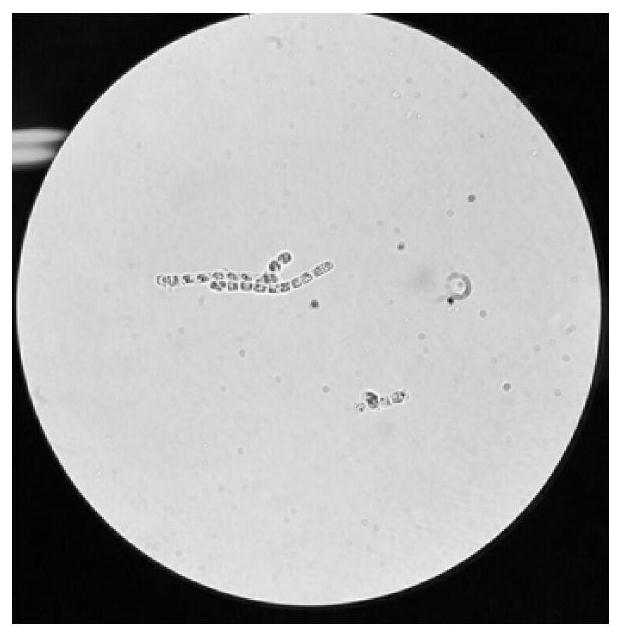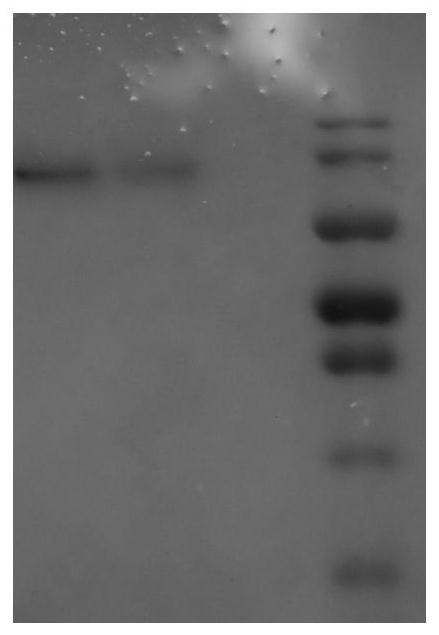A kind of material and application based on natural diatom shell and phycobiliprotein
A technology of phycobiliprotein and diatom algae, which is applied in the direction of wave energy or particle radiation treatment materials, medical preparations with non-active ingredients, medical preparations containing active ingredients, etc., can solve the problem that the structure of phycocyanin is not very stable, Weak photosensitive effect, limited application and other issues, to achieve the effect of stable structure, convenient material acquisition and strong stability
- Summary
- Abstract
- Description
- Claims
- Application Information
AI Technical Summary
Problems solved by technology
Method used
Image
Examples
Embodiment 1
[0042] A material preparation method based on natural diatom shells and phycocyanin, comprising the steps of:
[0043](1) Prepare f / 2 seawater medium and add 30 mg / L sodium silicate to adjust the pH to 7.8-8.0. Inoculate the diatom algae species of the genus Nanofrustulum, set the culture temperature of the light incubator at 25°C, 12h, 600Lux continuous light, 12h dark treatment, and regularly collect well-growing diatoms by precipitation method (diatom optical microscope picture See figure 1 ).
[0044] (2) Settling the harvested diatom algae in a beaker for 6 hours, absorbing the supernatant, adding 10 mL of distilled water and blowing, then standing for 4 hours, absorbing the supernatant, adding 100 mL of distilled water, and standing at room temperature for four to five days, Aspirate the supernatant, add 35mL hydrogen peroxide, and treat in a water bath at 90°C for 4 hours in the dark; the pure silicon shell obtained by removing the organic matter is obtained (the scan...
Embodiment 2
[0053] A material preparation method based on natural diatom shells and phycocyanin, comprising the steps of:
[0054] (1) Prepare f / 2 seawater medium and add 30 mg / L sodium silicate to adjust the pH to 7.8-8.0. Inoculate the diatom species and set the culture temperature of the light incubator at 25°C, 12h, 600Lux continuous light, 12h dark treatment, and regularly collect diatoms by precipitation method.
[0055] (2) Settling the harvested diatom algae in a beaker for 6 hours, absorbing the supernatant, adding 10 mL of distilled water and blowing, then standing for 4 hours, absorbing the supernatant, adding 100 mL of distilled water, and standing at room temperature for four to five days, Aspirate the supernatant, add 35mL hydrogen peroxide, and treat in a 90°C water bath in the dark for 4 hours; the organic matter is removed to obtain a pure silicon shell.
[0056] (3) Piranha solution (H 2 o 2 :H 2 SO 4 =1:6 mixing) at 80°C for 30 minutes, and washed twice with deioni...
Embodiment 3
[0064] A material preparation method based on natural diatom shells and phycocyanin, comprising the steps of:
[0065] (1) Prepare f / 2 seawater medium and add 30 mg / L sodium silicate to adjust the pH to 7.8-8.0. Inoculate the diatom species and set the culture temperature of the light incubator at 25°C, 12h, 600Lux continuous light, 12h dark treatment, and regularly collect diatoms by precipitation method.
[0066] (2) Settling the harvested diatom algae in a beaker for 10 hours, absorbing the supernatant, adding 100 mL of distilled water and blowing, then standing for 6 hours, absorbing the supernatant, adding 200 mL of distilled water, and standing at room temperature for four to five days, Aspirate the supernatant, add 85mL hydrogen peroxide, and treat in a water bath at 80°C in the dark for 4 hours; the organic matter is removed to obtain a pure silicon shell.
[0067] (3) Piranha solution (H 2 o 2 :H 2 SO 4 =1:8 mixing) at 80°C for 50 minutes, and washed twice with d...
PUM
 Login to View More
Login to View More Abstract
Description
Claims
Application Information
 Login to View More
Login to View More - R&D
- Intellectual Property
- Life Sciences
- Materials
- Tech Scout
- Unparalleled Data Quality
- Higher Quality Content
- 60% Fewer Hallucinations
Browse by: Latest US Patents, China's latest patents, Technical Efficacy Thesaurus, Application Domain, Technology Topic, Popular Technical Reports.
© 2025 PatSnap. All rights reserved.Legal|Privacy policy|Modern Slavery Act Transparency Statement|Sitemap|About US| Contact US: help@patsnap.com



